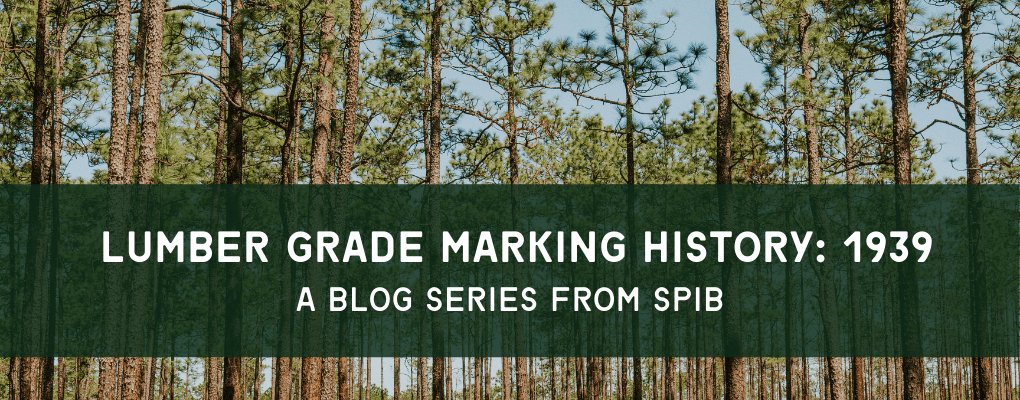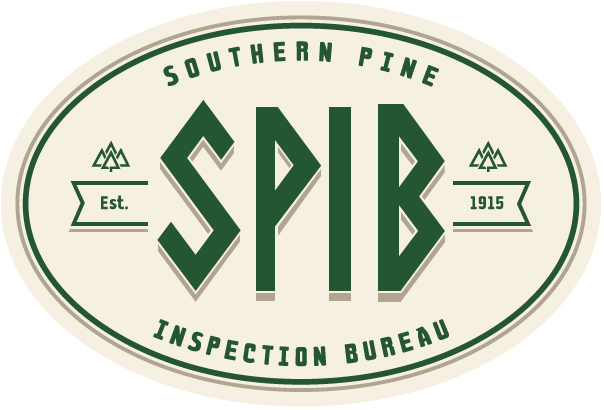
Lumber Grade Marking History: 1939
Introduction
The face of pop culture was forever changed in May of 1939 when Batman – created by artists Bill Finger and Bob Kane – made his first appearance in Detective Comics #27. He was the second such superhero of his type to make his debut in a year, with Superman hitting the newsstands for the first time in 1938. The next day, Lou Gehrig would set a streak for the most consecutive baseball games played that would go unbroken for 56 years before Cal Ripken Jr. would beat it by one.
In this section, we will also cover 1939 as it relates to the lumber industry. During this time, many manufacturers and retailers assumed the lead to guarantee the sound construction of residential buildings, all in the name of protecting homeowners and addressing financing concerns.
You will find out more about how correctly manufactured, properly seasoned, and efficiently graded lumber was guaranteed for use in houses in an effort to expand the practice of grade marking as far as it could go. You will also learn about the increasing demands by builders and consumers for standard and grade marked lumber, all of which were able to enhance the Southern Pine Association’s program of raising industry standards. Indeed, it seemed like 1939 was going to be an incredible year for the industry as a whole… but a storm was lurking just one year later that few, if any, could have predicted.
We trust that you will continue to find all of this information invaluable, as it continues to tell the story of the evolution of an entire industry playing out before our very eyes.
1939.
Manufacturers and retailers assumed the lead to assure the residential buildings’ sound construction and protect homeowners and financing concerns. Correctly manufactured, properly seasoned, and efficiently graded lumber was guaranteed for use in houses by their determination to expand grade marking practice. The increasing demands by builders and consumers for standard and grade marked lumber enhanced the Southern Pine Association’s program of raising industry standards. With more than three hundred fifty southern pine mills already qualified to furnish grade marked lumber (SPA), a larger number could soon grade mark their output and increase the supply sources. Grade marking facilities were extended to the entire industry by Southern Pine Association action. Mills, availing themselves of the privilege, quickly met the required standards of demonstrated grade marking efficiency. Lumber productions of licensed SPA subscribers continued to be grade marked SPA; non-subscriber mills carried none of the industry’s burdens or expenses in maintaining traffic, conservation, statistics, advertising, trade promotion, and grade marked SPIS. The distinction was justified. Charges for the former (SPA) were fifteen cents per M based on entire shipments; the latter (SPIS), nine cents per M based on entire shipments.
Practically all agencies identified with building approved the practice of grade marking lumber as the best means for protecting the consumer and his investment. During the past twenty-five years, the consuming public had been educated in various ways and, to a very great extent, in the advantages of grade marked lumber. SPA trade promotion had spent millions of dollars in advertising quality lumber – SPA participated, annually, in retail lumberman conventions – SPA made thousands of personal calls on specifiers – SPA supplied plans for thousands of home construction jobs – all in the interest of quality lumber, good house building and the welfare of the southern pine industry.
The Southern Pine Association’s inspection service for grade marking lumber was extended and made available to all southern pine mills – at a cost – in order to meet the increasing demand by home builders and other consumers for standard and grade marked lumber; and as a further step toward voluntary elevation of industry standards.
Southern pine, properly manufactured, adequately seasoned, and correctly graded found no superior building material. Policing the grade marked lumber by the supervision of mill inspections and check inspections on grade marked lumber at destination points, performed by qualified Southern Pine Association inspectors, guarded the official’s integrity grade mark symbol, and minimized the abuse of the grade marking privilege. A greater number of inspections obtained a more expanded control – with the resultant greater protection. The future welfare of the southern pine industry demanded vigilance to safeguard the proper use of the grade mark symbol in branding lumber. The effort was constantly made to attain this efficiency.
Compared with prior years, lumber today was better manufactured, better graded, and more properly seasoned; species and manufactured items more efficiently segregated, and strong forces were at work to protect the home buyer against shoddy construction – insofar as the more substantial elements of industry were concerned. Better construction was in evidence with all houses financed by the FHA guaranteed loans. American lumber standard-sized were always used in the majority since – the idea of saving expense through the use of sub-standard materials is a fallacy. Construction rigidity was sacrificed, generally, with the use of sub-standard lumber, and maintenance costs increased.
Six hundred houses in twenty key communities in northern, southern, and eastern states were recently studied by an agency of the U. S. Government, their findings being presented under the headings of – foundation, basement, skeleton frame, nails, openings, braces, cutaways, weather protection, lumber moisture content, seeping moisture, drainage outlets and ventilation, roofing material, roof protection, and quality lumber.
The destination of a new grade of dimension having specific stress values was included in southern pine’s official grading rules. Further simplification and clarification to bring the phraseology of the rules in line with the American Lumber Standards were made. New grades in finish, common boards, and small timbers lowering the moisture content limitation were accomplished. The word “Common” was eliminated from all grade names.
By means of a personal appearance of one of their representatives, the Southern Pine Association explained the new SPIS program to the Jacksonville Wholesale Lumbermen’s Association at Jacksonville, Florida, on March 1, 1939. They were favorably impressed.
Soon after, Miami advertising on behalf of grade marked southern pine was criticized by members of the Jacksonville Wholesale Lumber Dealers Association as placing too much stress on SPA and SPIS grade marked lumber. Misconstrued to the point that the only lumber suitable for use in the building was that bearing the Southern Pine Association grade mark, the Jacksonville wholesalers assumed a restriction of their previous liberties, in the matter of grades sold by them, as the effects of monopolistic acts. They argued that many of their mill connections produced good lumber and were entitled to special group grade mark privilege use of brands, other than the designated official symbol. It developed, at a conference on the subject in Jacksonville, Florida, September 12, 1939, that they were in favor of SPA and SPIS grade marking and were satisfied with the process of inspections and handling afforded everyone by the Southern Pine Association – but were piqued at not being consulted for approval of the Miami advertising campaign.
“Jerry building” of prior years, the result of the competition’s stress, damaged the lumber dealer particularly – and the entire lumber industry generally. The automobile industry progressed because of an improved product made possible through research. The lumber industry remained stagnant – further handicapped by the special privileges which it permitted to grade speculators.
The low-grade lumber market was early found not to be house framing. The legitimate dealer wanted to have the proper grade of lumber used for the right purpose; and, most of all, to serve his customers with the lumber grade bought being stamped and backed by reliable manufacture. Grade marking greatly assisted.
The benefits of grade marking, explained at the Middle Atlantic Lumbermen’s Association annual convention in Philadelphia, Pa., were declared to be fundamentally sound and important to responsible manufacturers of quality lumber – to reputable dealers in business for profit – to architects and specifiers desiring assurance that the grades and quality specified would be delivered on the job – and to home builders and consumers, generally, finding themselves among the many uninformed. The demand growing rapidly, a plentiful supply of grade marked lumber available, sales promotion working continually to correct, minimize and eliminate misconstructions and accusations maliciously brought to bear on the grade marking practice were factors giving stability and permanence to the official lumber branding movement.
Certified Lumber Standards announced by the Middle Atlantic Lumbermen’s Association were endorsed by the Philadelphia Wholesale Lumber Dealers Association as an act working toward the restoration of public confidence in lumber and to protect the retail lumber industry against the disastrous effects of green lumber use.
Northern white pine, Norway pine, eastern spruce, and eastern hemlock, commonly referred to as northeastern softwoods, became subject to grade marking practices under the Northeastern Lumber Manufacturers Association rules, effective September 1, 1939. Grade marking was voluntary, but the use of the association symbol, responsible for the grading rules of the species, required official association inspections for members and licensed mills, as well as for nonmembers and non-licensed mills.
Changes under the Fair Labor Standards Act of the Wage and Hour Law were effective Oct. 25, 1939 – forty-two hours a week maximum working time and thirty cents an hour minimum pay rate – no profit on merchandise, rents, or credit conveniences afforded by employers were permissible – under penalty.
